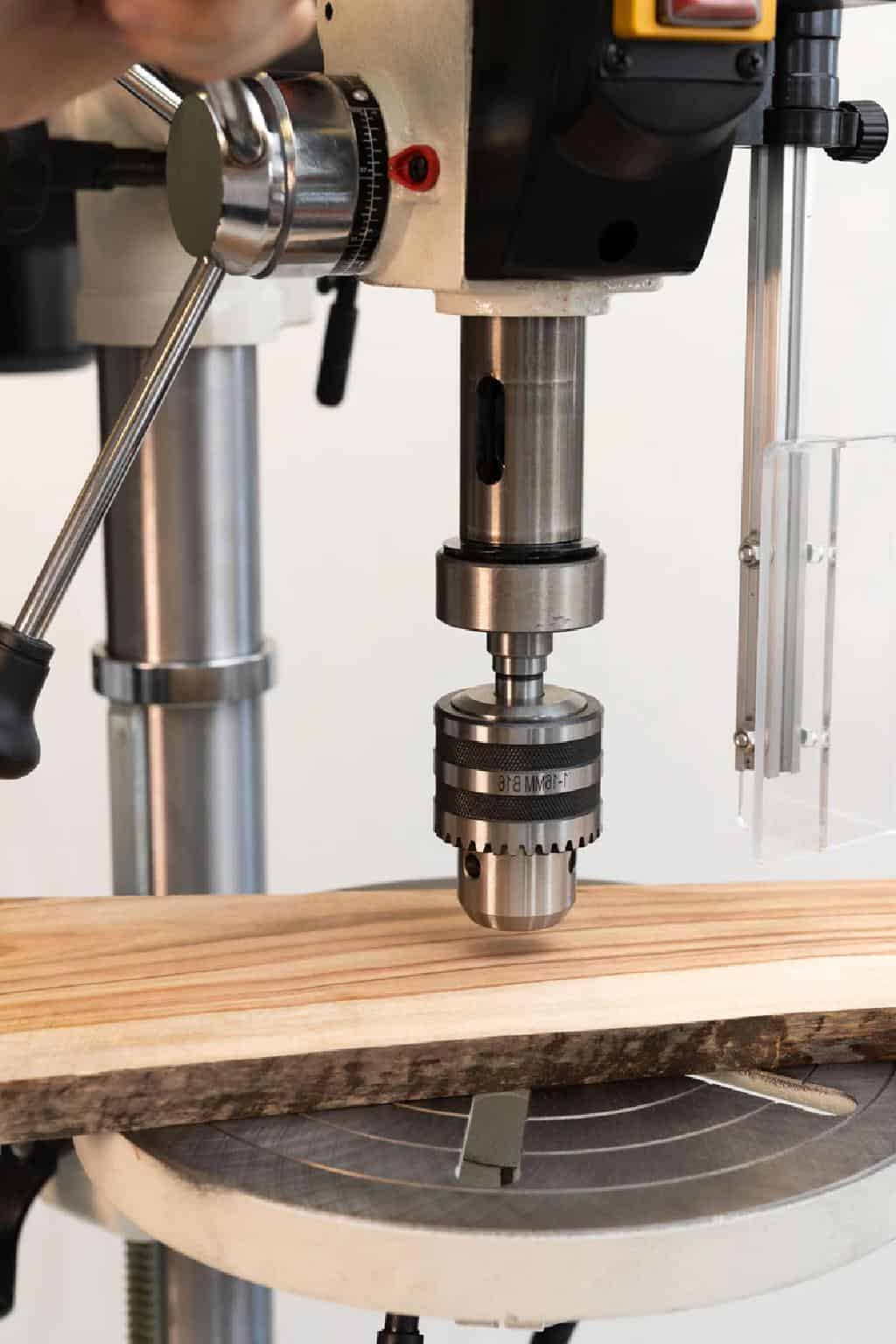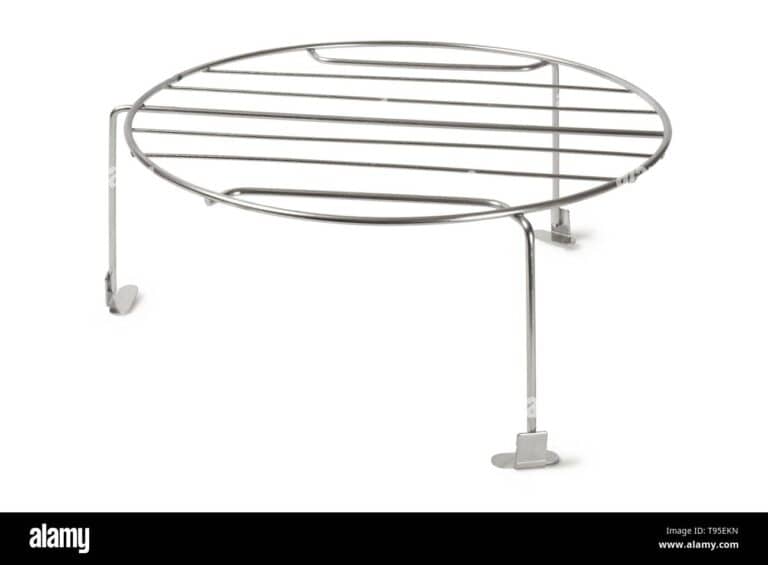What Is an Oscillating Drill Press? How is it Different from a Radial Press?
In the world of power tools, few are as essential and versatile as the drill press. Whether you are a woodworking enthusiast or a DIY aficionado, having a reliable drill press can make all the difference in your projects. But did you know that not all drill presses are created equal?
Understanding the subtle yet significant differences between various types of drill presses is crucial to choosing the right one for your needs.
In this article, we will delve into two popular types of drill presses: radial and oscillating. These two variations offer distinct features and functionalities that cater to different applications.
By exploring their unique characteristics, advantages, and limitations, we aim to provide you with the knowledge required to make an informed decision when selecting a drill press that suits your specific requirements.
We’ll compare these drilling powerhouses side by side so that you can choose wisely based on your desired functionality and applications. So let’s dive into the world of radial vs. oscillating drill presses and discover which tool aligns perfectly with your project needs!
What Is an Oscillating Drill Press?
An oscillating drill press is a versatile and powerful tool that provides accuracy, control, and flexibility in various applications. It is equipped with an oscillating spindle, which means the spindle moves up and down from side to side while maintaining a circular motion, in addition to the drill bit spinning.
This feature is beneficial for intricate or elaborate tasks and can speed up drilling, lower heat accumulation, and reduce friction, allowing for drilling through hard materials more rapidly and with less effort. The oscillating drill press is a versatile instrument that can work with various materials, including wood, metal, and plastic.
It can also be used for operations like sanding or polishing, making it a time-saving tool that eliminates the need for numerous other tools.
The Shop Fox 13-1/4 in. Oscillating floor drill press is an example of such a tool, available for purchase at a price of $2249.30.
Radial Drill Press: Versatile and Flexible for Various Drilling Needs
There are some features that make a radial drill press different from other types of drill presses. These features give users more options and freedom when they are drilling.
One key feature is the movable head or arm, which allows the radial drill press to extend horizontally over a wide area. This enables users to position the workpiece anywhere on a large table and reach it effortlessly, even when drilling holes far away from the edge.
The ability to move the head also means that the radial drill press can accommodate larger workpieces compared to other models. Whether you’re working on long pieces of lumber for furniture making or need to drill precise holes in metal sheets, a radial drill press offers ample space and reach options to handle these tasks effectively. Its adjustable height settings also contribute to its versatility, allowing easy adaptation for various materials and drilling depths.
With its greater maneuverability through horizontal movement and adjustable height settings, a radial drill press shines, particularly when undertaking projects involving significant-sized workpieces.
Examples include drilling multiple holes along the length of large boards for shelving units or constructing frames requiring accurate hole placements at different angles within bulky materials. The combination of mobility, adaptability, and precision makes a radial drill press an excellent choice for those seeking versatility in handling varying projects with ease.
Oscillating Drill Press: Adding Vertical Motion to Your Drilling Action
One of the key features that sets an oscillating drill press apart from other types is its ability to incorporate vertical motion into the drilling action. Unlike a standard drill press that only moves in a purely rotational motion, an oscillating drill press adds a back-and-forth oscillation to the drilling process.
This vertical movement provides several benefits, making it a valuable tool for certain applications.
One significant advantage of an oscillating drill press is its ability to deliver smoother cuts and reduce tear-out. The up-and-down motion during drilling helps eliminate chipping or splintering when working with delicate materials like wood or laminates.
This makes it particularly useful in woodworking projects where clean cuts are essential for achieving professional-looking results.
Additionally, the incorporation of vertical oscillation enhances the accuracy of your drilling. It allows you to maintain better control over the cutting tool as it penetrates through the material, resulting in more precise holes with fewer errors. Whether you’re creating dowel joints or installing hardware on furniture pieces, an oscillating drill press can help ensure your measurements and hole placements are spot-on.
If you often work with intricate designs, fine details, or materials prone to splintering, investing in an oscillating drill press could be highly beneficial. Its unique ability to add vertical motion not only improves precision but also contributes to cleaner cuts and reduced tear-out during drilling operations—factors that can significantly enhance your overall project outcomes.
What Are the Differences Between Radial and Oscillating Drill Presses?
When it comes to comparing radial and oscillating drill presses, there are several key differences and similarities worth considering. One major distinction lies in their design and functionality.
Radial drill presses have a spindle that can be moved horizontally along an arm, providing greater reach and versatility for drilling holes in large workpieces. On the other hand, oscillating drill presses feature a unique mechanism that allows both the spindle and the table to move up and down in addition to the typical vertical movement found in most drill presses.
In terms of speed control, radial drill presses generally offer multiple speed settings that can be adjusted through a belt pulley system or variable speed control knob. This enables users to optimize drilling speed based on different materials or hole sizes. Oscillating drill presses usually have fixed-speed motors with fewer options for adjusting speeds.
Another significant difference lies in power capabilities. Radial drills tend to have higher horsepower ratings compared to oscillating models, making them better suited for heavy-duty tasks that require drilling through tougher materials such as metal or hardwood. With their extra power, radial drills can handle more demanding projects with ease.
Choosing the Right Tool for You
When it comes to choosing between a radial and oscillating drill press, there are several factors you should consider. One of the first considerations is the price. Radial drill presses tend to be more expensive than oscillating ones due to their additional features and versatility. If budget is a concern, an oscillating drill press may be the more affordable option.
Another factor to take into account is your available workspace. Radial drill presses typically have a larger footprint and require more space compared to oscillating models. If you have limited space in your workshop or garage, an oscillating drill press might be a better fit.
Your intended use cases also play a crucial role in determining which type of drill press is right for you. For simple drilling tasks that do not require much precision or flexibility, an oscillating model would suffice. However, if you need to perform intricate drilling operations such as angled holes or repetitive drilling at different positions, a radial drill press would offer greater precision and efficiency.
Choosing between radial and oscillating drill presses depends on your specific preferences and project requirements. If you often work on larger pieces where reaching certain areas is essential, then a radial press would be ideal due to its versatile reachability features.
However, if you primarily work on delicate woodworking projects where accuracy is essential or need flexibility when it comes to table movements like sanding or routing jobs after drilling holes without constantly changing tools, an oscillating model is probably more suitable for your needs.
Now that we’ve examined the distinctive features of both drill presses, the question arises: which one is right for you? Let’s break it down into a decision-making table:
| Feature | Oscillating Drill Press | Radial Press |
| Lateral Movement | ✓ | |
| Reach and Flexibility | ✓ | |
| Versatility | ✓ | ✓ |
| Precision Control | ✓ | |
| Multi-Functionality | ✓ | |
| Space Considerations | ✓ |
Conclusion
In conclusion, both radial and oscillating drill presses have their own unique advantages, depending on individual needs and preferences. Radial drills offer greater flexibility with their ability to adjust positions easily while maintaining accuracy across various angles and directions. On the other hand, oscillating drills excel in simplicity, with straight-forward operation ideal for basic drilling requirements.
Before making your final decision, consider factors such as price, available workspace, intended use cases,and personal preferences. As always,prioritizing safety measures while using any power tools is essential. Familiarize yourself with each type’s functionalities and ensure that they align well with your specific requirements. Once you’ve made an informed choice, you’ll be well-equipped to produce your DIY maintenance woodworking projects with precision and ease.






